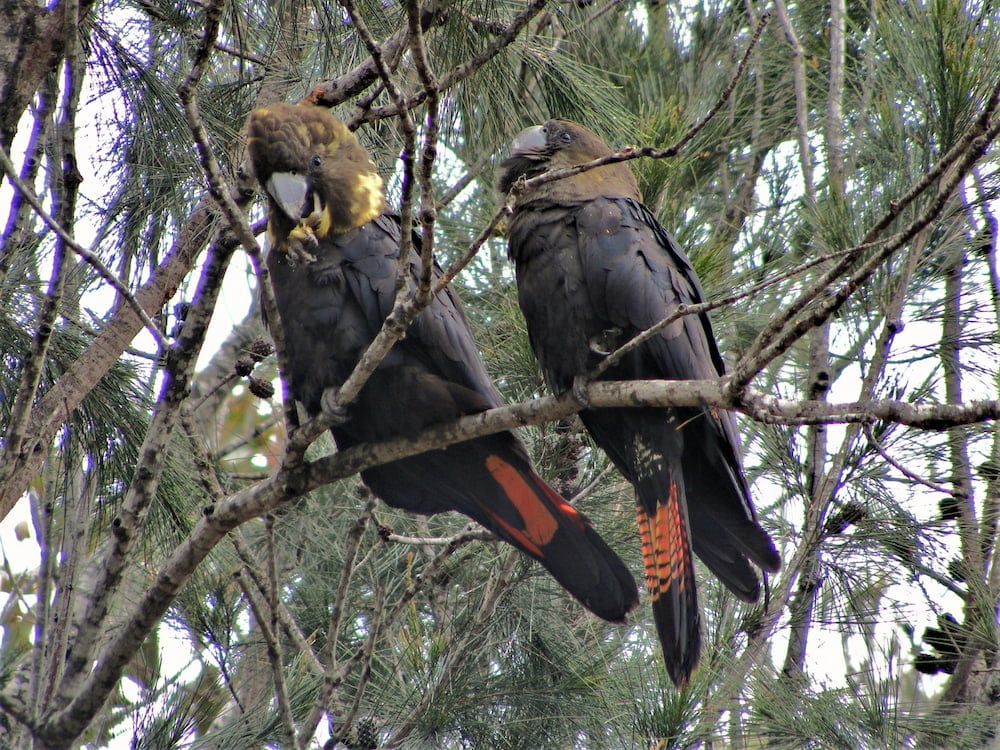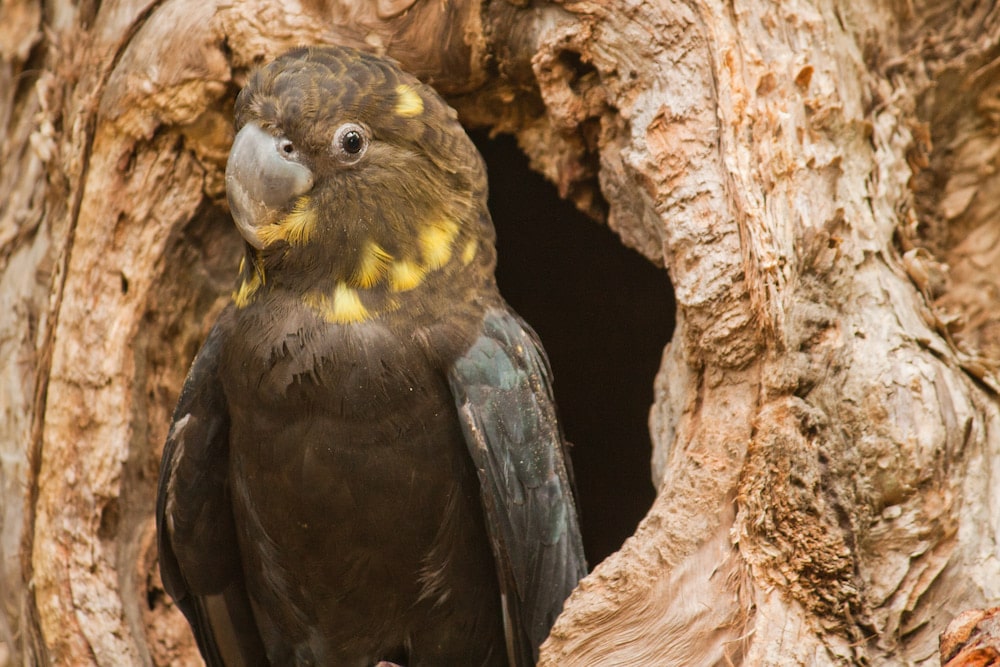The glossy black-cockatoo is one of Australia’s rarest cockatoos, its habitat and food devastated by the Black Summer bushfires of 2019–20. It is listed as vulnerable in NSW and nationally vulnerable under last year’s Environment Protection and Biodiversity Conservation Act.
But a decade of conservation in the ACT by environmental enterprise Greening Australia has inspired a recent project to restore the bird’s habitat and forage trees in NSW.
The little bird is threatened by habitat loss and fragmentation, Lucy Wenger, Greening Australia’s senior program officer, explained. Land clearing, urbanisation, and lack of regeneration from overgrazing have made its habitat and food supply disappear.
The bird nests in hollows in old eucalypt trees, which can take a century to form. It feeds almost exclusively on she-oak seeds. But many of those trees were burnt in the bushfires – and it could take a decade to produce enough seed for the bird to eat.
To protect the creature, Greening Australia has planted 17,400 she-oaks and other habitat trees since 2019 at 38 properties in south-east NSW, including near the bird’s population hotspots around Windellama, Mulloon and Lower Boro.
“With the right actions to restore these critical habitat and food sources now, we can help safeguard the future of this iconic species longer term,” Ms Wenger said.

Since the trees were planted, glossy black-cockatoos were found at 40 per cent of the participating properties.
“Whilst it may be too soon to know whether the glossy black-cockatoos will use the newly planted trees, early results remain positive,” Ms Wenger said.
Other threatened birds, including the flame robin and diamond firetail, were also found at planting sites.
“A fantastic outcome for biodiversity more broadly in the region,” Ms Wenger said.
The project builds on more than a decade of Greening Australia work to recreate the cockatoo’s habitat and food sources in the ACT.
Greening Australia’s first project in the ACT began in 2011, when they worked with ACT Parks and Conservation Service for three years to restore the bird’s depleted foraging habitat in nature reserves, including Isaacs Ridge Nature Reserve and Tuggeranong Hill.
“The project captured the community’s interest at the time, from farmers to volunteers and ACT ministers,” Ms Wenger said. “One of our earliest plantings as part of this project involved the invaluable help of 150 keen volunteers.
“The initial ACT project helped set the foundations for and inspired our ongoing work bringing back the glossy black-cockatoo in the ACT and south-east NSW. We’ve worked with a huge range of stakeholders over the years, and together have helped raise the profile of this iconic species and make a positive difference for its future.”
Greening Australia is a national not-for-profit committed to restoring Australia’s diverse landscapes and protecting biodiversity. Its project in NSW was funded by the NSW Government’s Saving our Species program and the NSW Environmental Trust.



